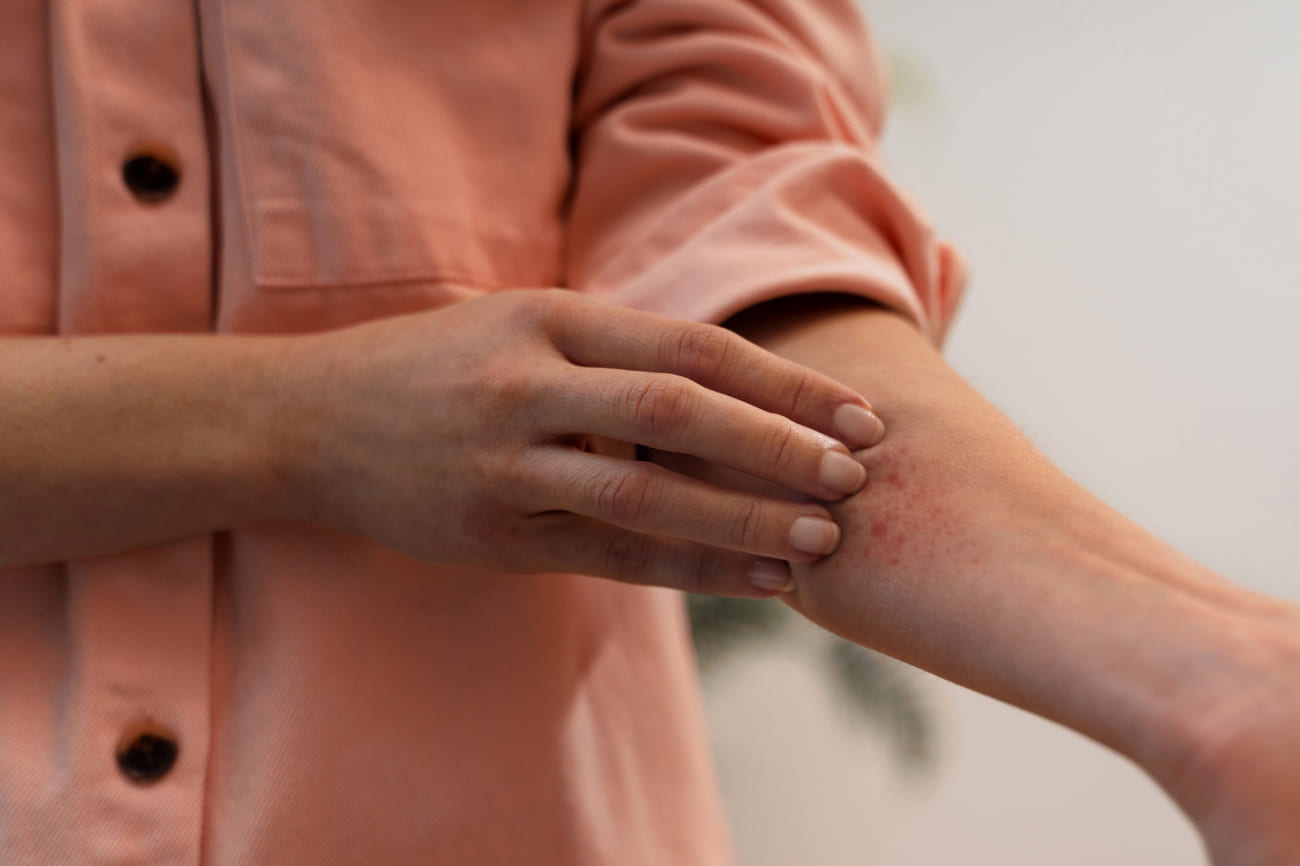The Itch That Won't Quit: Navigating Atopic Dermatitis

Atopic dermatitis, commonly called eczema, is more than just a skin condition; it’s a daily battle for millions. Characterized by relentless itching and inflammation, this chronic ailment often begins in childhood and can linger into adulthood, affecting self-esteem and overall quality of life.
In this blog, we will explore the intricate causes and symptoms of atopic dermatitis and provide practical management strategies to help those affected regain their comfort and confidence.
-
What Causes Atopic Dermatitis?
Atopic dermatitis results from a combination of genetic and environmental factors. Genetics plays a significant role, as the condition often runs in families. Environmental triggers, such as allergens, stress, and harsh weather, can exacerbate symptoms. Understanding these triggers is crucial to managing flare-ups and maintaining skin health.
-
Recognizing the Symptoms
The symptoms of atopic dermatitis vary from mild to severe and can change over time. Common signs include dry, scaly patches, intense itching, and red, inflamed skin. These symptoms can affect any body part but often appear on the face, hands, and behind the knees. Early recognition and treatment are crucial to minimizing discomfort and preventing complications.
-
The Impact on Quality of Life
Living with atopic dermatitis can be challenging, affecting both physical and emotional well-being. The constant itch can disrupt sleep, leading to fatigue and irritability. Additionally, visible skin changes can impact self-esteem and social interactions. It's essential for individuals to seek support from healthcare providers and loved ones to cope with these challenges.
-
Managing Atopic Dermatitis with Skincare
Regular moisturizing helps maintain skin hydration and creates a barrier against irritants. To reduce the risk of irritation, opt for fragrance-free and hypoallergenic products. Gently cleansing with lukewarm water and mild soap can also help prevent further skin damage.
-
Identifying and Avoiding Triggers
Managing atopic dermatitis involves identifying and avoiding triggers that can cause flare-ups. Common irritants include certain fabrics, soaps, and allergens like pollen and pet dander. A diary of symptoms can help pinpoint specific triggers, allowing individuals to make necessary lifestyle adjustments.
-
The Role of Medication in Management
For some, medication may be necessary to control atopic dermatitis. Over-the-counter creams containing hydrocortisone can reduce inflammation and itching. For more severe cases, prescription medications such as topical corticosteroids or immunosuppressants might be necessary. Consult a healthcare professional to determine the best treatment plan.
-
Exploring Natural Remedies
Many people turn to natural remedies to manage atopic dermatitis. Oatmeal baths, coconut oil, and aloe vera are famous for soothing irritated skin. While these remedies can provide relief, it's essential to consult a healthcare provider before trying new treatments to ensure they are safe and effective.
As we conclude our exploration of atopic dermatitis, remember that managing this condition is a journey filled with ups and downs. Each small step you take—trying a new remedy or seeking support—brings you closer to feeling comfortable in your skin.
And yes, don’t forget to consult a healthcare professional before trying something independently. Through proactive actions, you can finally say goodbye to feeling uncomfortable and hello to a life where the itch doesn’t hold you back!
